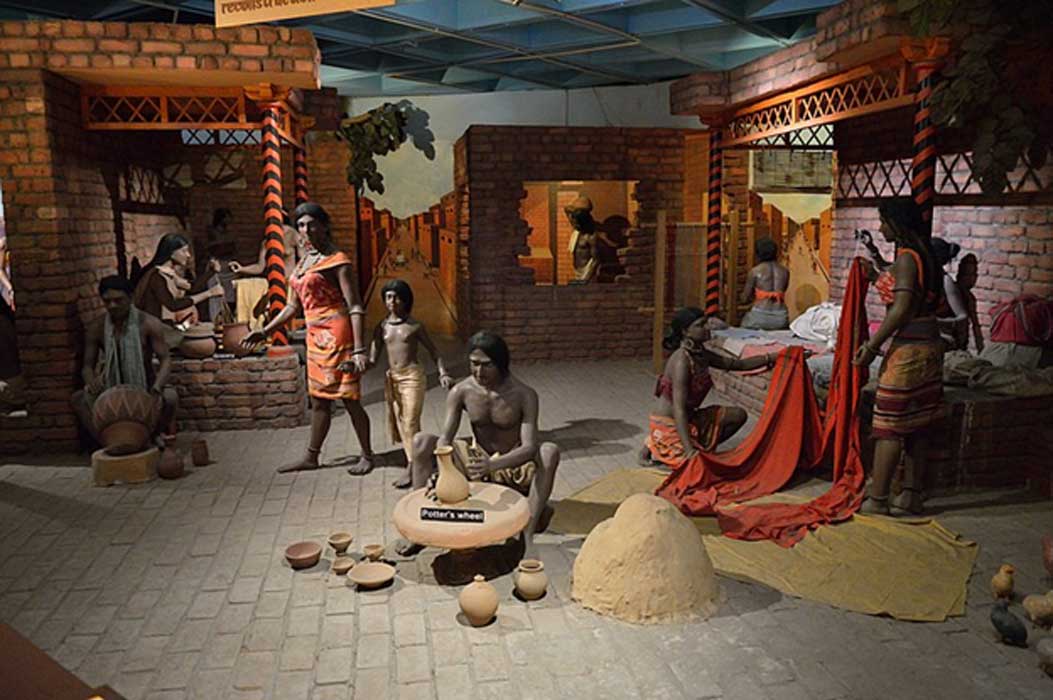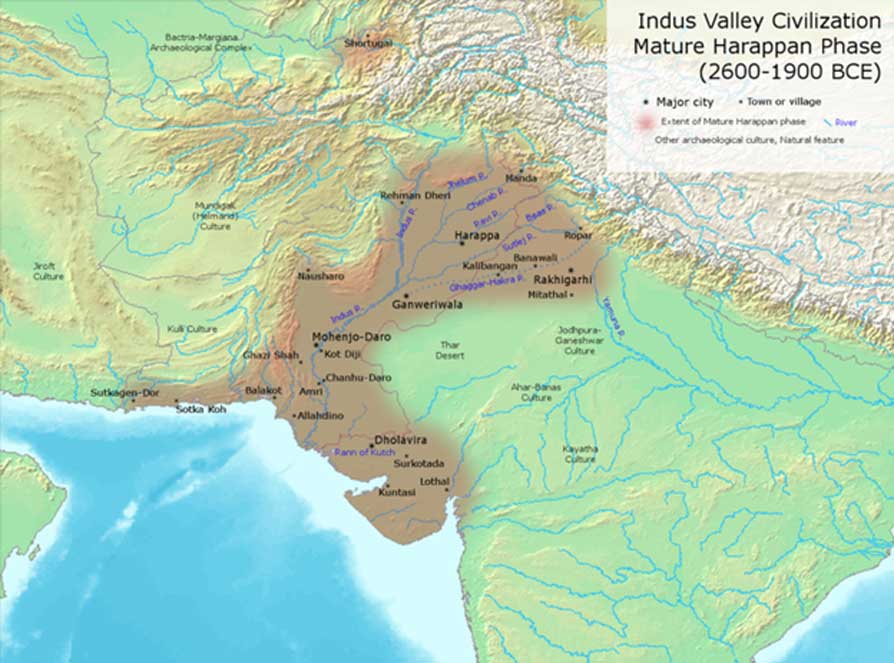
Bronze Age Indus Valley Civilization: The Spirit of Saraswathi
In the Rigveda, the ancient Indian Vedic Sanskrit canonical sacred texts, a hymn is dedicated to each deity and the goddess Saraswathi is revered as a female deity with healing and the purifying powers of abundant, flowing waters. Saraswathi is therefore also reference to a river and she embodies wisdom, music, language and purification of self. The Ghaggar-Hakra river is a monsoon fed perennial river in India and Pakistan, believed to be the mythological Sarasvati river, which formed a confluence with the Ganges and Yamuna, both considered sacred rivers. The Indus Valley Civilization is thus also referred to as the Sarasvati Civilization, in honor of the ‘river goddess’ Saraswathi.

Indus Valley Civilization major sites. (CC BY-SA 3.0)
Nestled between the Arabian Sea, mountain ranges and a desert in north-western South Asia, the Indus valley extends from what today is north-east Afghanistan to Pakistan and north-west India. The Indus Valley Civilization was contemporary to the Ancient Egyptian, Minoan (Crete) and Mesopotamian Bronze Age, particularly the Elamite, civilizations. In Sumerian texts, the Indus valley people are referred to as ‘Meluhhaites’ and the Indus valley is called ‘Meluhha’.





